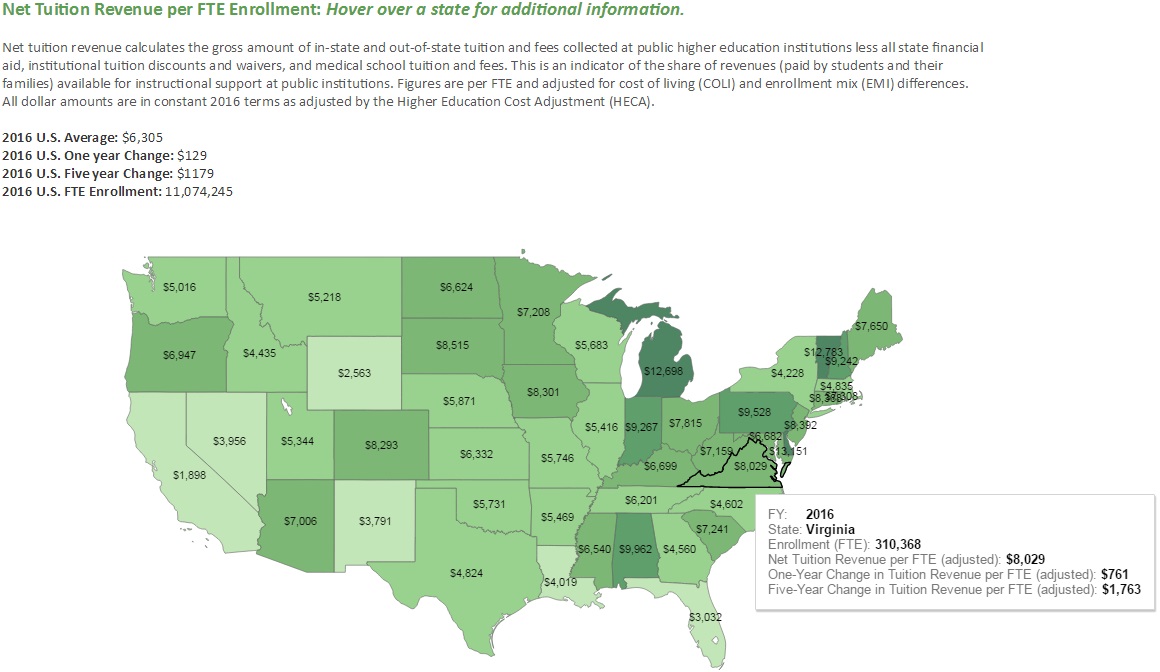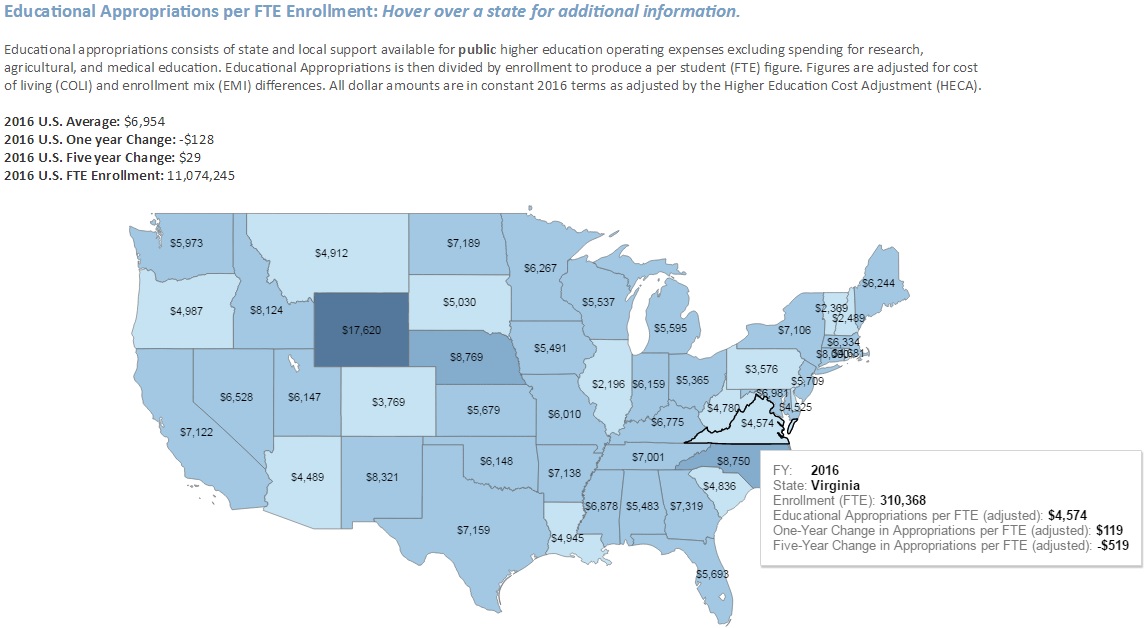Some aspects of higher education are maddeningly complex, but other aspects are as simple as basic math.
Public universities’ expenditures equal roughly what they get from the state plus what they charge students in tuition. If universities get less money from the state, they have to charge students more. You can buffer some of the cuts through cost efficiencies, and yes, there’s always some additional inefficiency to be found. But keep chopping state support and sooner or later families will end up paying more. It’s a policy choice we make.
Have a look at the data and interactive tools offered by the State Higher Education Executive Officers Association (or just look at the maps below).
Virginia public universities spend roughly what the average university does (revenue from tuition and appropriations received by Virginia colleges and universities is just about 5 percent below the national average). The difference is that, the state spends about $2,400 (or 34 percent) less than the national average, and tuition revenue per student is, surprise, about $1,700 (or 27 percent) above the national average.
 The shift in policy from state funding to tuition reliance has been surprisingly fast. As you can see in the chart below, it has taken place over the past 15 years. In 2001, public support made up 70 percent of higher education funding, but in 2016 this has declined to just 40 percent.
The shift in policy from state funding to tuition reliance has been surprisingly fast. As you can see in the chart below, it has taken place over the past 15 years. In 2001, public support made up 70 percent of higher education funding, but in 2016 this has declined to just 40 percent.
It is a matter of simple arithmetic to show that the dollars Virginia colleges and universities do not receive from public sources are collected via tuition.



